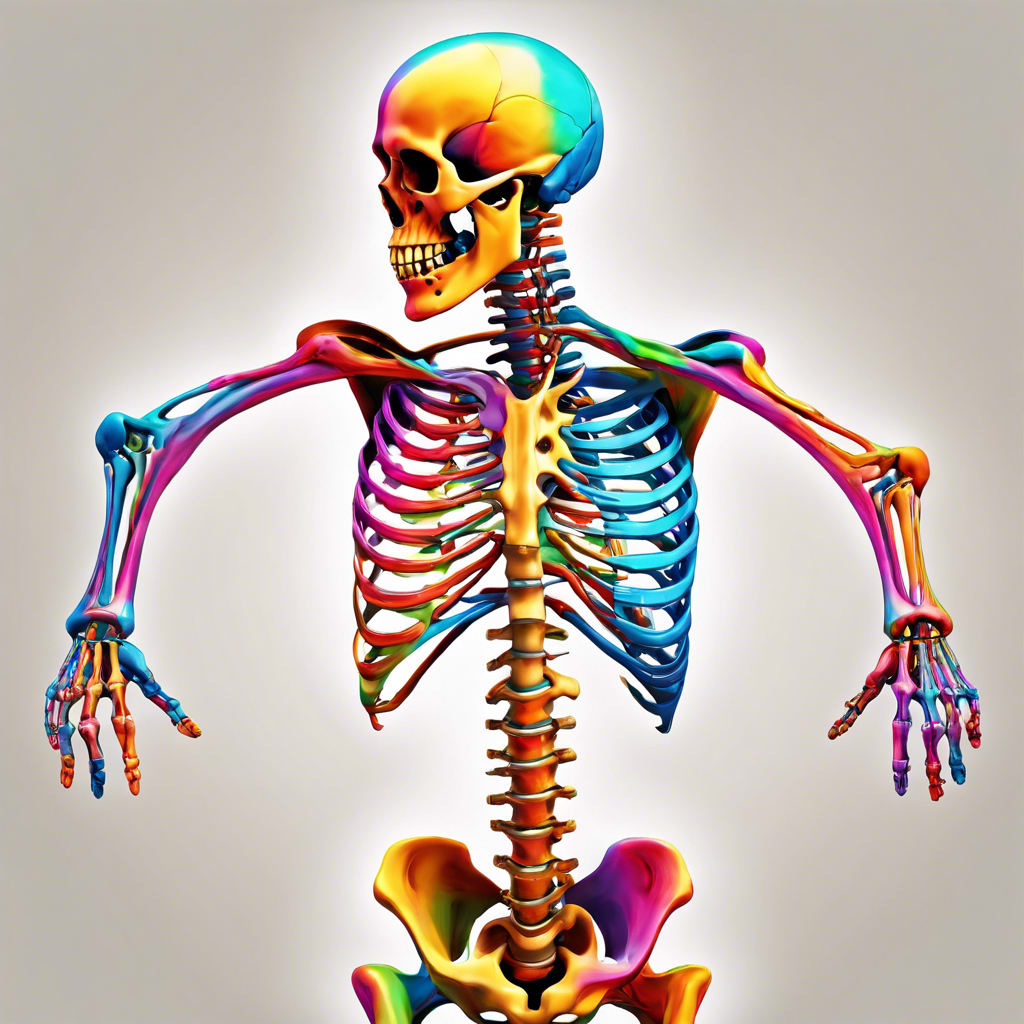The Body's Framework: Understanding Bones and How to Keep Them Strong
Beyond the Skeleton: Your Bones, the Pillars of Movement and Protection

The Body's Framework: Understanding Bones and How to Keep Them Strong
Our bodies are marvels of engineering, a complex interplay of tissues and organs working in perfect harmony. Just as a house requires a strong framework to support its walls and roof, our bodies rely on a robust skeletal system for structure, movement, and protection. This system, comprised primarily of bones, plays a crucial role in our overall health and well-being.
Building Blocks of Strength: Compact Bone and Spongy Marrow
Bones are more than just hard, white structures. They possess a fascinating internal architecture that optimizes both strength and weight. The outer layer, called compact bone, is dense and hard, providing a rigid shell that protects internal organs and offers an anchor point for muscles. This strength comes from its high calcium content, making it the body's primary storage site for this essential mineral.
Inside the compact bone lies a spongy inner core called bone marrow. Unlike its dense counterpart, bone marrow is a network of interconnected spaces filled with red and yellow marrow. Red marrow is the body's factory for blood cells, producing red blood cells that carry oxygen and white blood cells that fight infection. Yellow marrow, on the other hand, primarily stores fat, acting as an energy reserve.
This seemingly simple structure - a hard outer shell and a spongy inner core - offers a remarkable compromise: strength without excessive weight. The air pockets within the bone marrow reduce the overall weight of the skeleton, allowing for efficient movement.
Cartilage: The Flexible Buffer
Our bones don't operate in isolation. They connect at joints, allowing for movement and flexibility. These joints are cushioned by a specialized tissue called cartilage. While incredibly strong, cartilage isn't as rigid as bone, offering a crucial buffer zone. It acts as a shock absorber, minimizing friction between bones during movement and preventing painful grinding. Examples of cartilage can be found in the knees, elbows, wrists, and between the vertebrae in the spine.
Building Strong Bones for Life: Exercise and Calcium
Just like a house needs regular maintenance to stay strong, our bones too require consistent care. Two crucial elements contribute significantly to bone health: exercise and calcium intake.
- Weight-bearing activities: Our bodies are designed for movement, and bones respond positively to the stress of weight-bearing exercises. Activities like walking, running, dancing, and strength training stimulate bone cells to become denser and stronger. This is particularly important during childhood and adolescence, when peak bone mass is being built. Up to 90% of peak bone mass is acquired by age 18 in females and 20 in males, making early intervention crucial for lifelong bone health.
- Calcium: The Essential Building Block: Calcium is the cornerstone of bone health. Our bodies store most of the body's calcium in compact bone, and adequate intake is essential for building strong bones and preventing future problems like osteoporosis, a condition characterized by weak and brittle bones. Dairy products are a rich source of calcium, but other options like leafy green vegetables, tofu, and fortified foods can also contribute to a calcium-rich diet.
Safeguarding Your Bones: Common Conditions and Prevention Strategies
Maintaining strong bones throughout life is crucial for optimal mobility and overall health. Here's a glimpse into some common bone conditions and how to safeguard your skeletal system:
- Osteoporosis: This condition, often referred to as "silent thief" due to the lack of initial symptoms, weakens bones and increases the risk of fractures. Risk factors include genetics, low calcium intake, lack of exercise, and hormonal changes like menopause. Early diagnosis through bone density scans and a comprehensive approach incorporating calcium, vitamin D supplements, and weight-bearing exercises are crucial for preventing osteoporosis.
- Arthritis: This umbrella term encompasses various conditions that cause joint pain and inflammation. The two most common types are osteoarthritis, a degenerative condition affecting the cartilage within joints, and rheumatoid arthritis, an autoimmune disease that attacks the joints. Maintaining a healthy weight, exercising regularly, and exploring natural anti-inflammatory remedies like turmeric or fish oil can help manage arthritis symptoms and support joint health.
- Fractures: A bone fracture is a break or crack in a bone. Falls, accidents, and sports injuries are common causes. Seeking immediate medical attention for suspected fractures is vital for proper healing and regaining mobility. Current trends in fracture treatment include minimally invasive surgical techniques and promoting bone healing through physical therapy and targeted nutrition.
Demystifying Myths: Building Bone Health Through Awareness
Many misconceptions surround bone health. Let's debunk some common myths:
- Myth: "Bone density only matters when you're old." Fact: Peak bone mass development occurs in youth, and neglecting bone health during this crucial window can have long-term consequences. Building strong bones early in life sets the foundation for a lifetime of mobility and reduces the risk of fractures later.
- Myth: "Milk is the only source of calcium." Fact: While dairy products are a good source of calcium, many other options exist for those with lactose intolerance or vegan dietary choices. Leafy green vegetables like kale and collard greens, calcium-fortified plant-based milks, tofu, and even certain types of fish like sardines can contribute significantly to a calcium-rich diet.
- Myth: "Lifting weights is bad for growing bones." Fact: Strength training, when performed with proper guidance and technique, is beneficial for bone health at all ages. Weight-bearing exercises and resistance training stimulate bone growth and increase bone density, helping to prevent osteoporosis and fractures later in life.
Conclusion: A Strong Foundation for a Healthy Life
Our bones are more than just a static framework. They are dynamic tissues that respond to the demands placed upon them. By understanding their structure, function, and the importance of exercise and calcium intake, we can take proactive steps to build strong bones and maintain a healthy skeletal system throughout life. Remember, a strong foundation is essential for a healthy body, and our bones play a vital role in supporting us throughout our lives. Taking charge of our bone health through a combination of diet, exercise, and awareness empowers us to move with confidence and enjoy an active, fulfilling life.
About the Creator
suren arju
Hi there! I'm Suren, your startup guide. Entrepreneur, writer, dreamer - I share insights, tips & stories to fuel your startup journey. Ready to explore, learn & win together? Join me & let's redefine how we launch, learn & leap!
Enjoyed the story? Support the Creator.
Subscribe for free to receive all their stories in your feed. You could also pledge your support or give them a one-off tip, letting them know you appreciate their work.





Comments
There are no comments for this story
Be the first to respond and start the conversation.